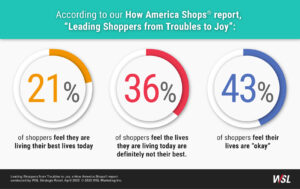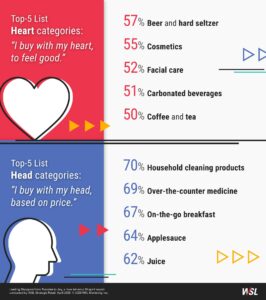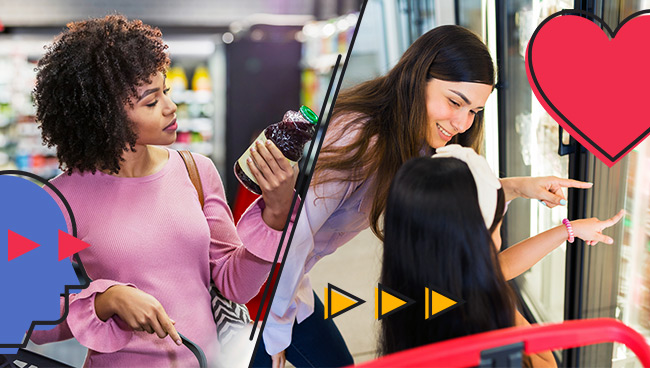Today’s post-pandemic, inflation-weary consumers aren’t just shopping for products, they’re shopping for joy. Our consumer research shows that most are balancing this joy of shopping with the need to be frugal. Brands and retailers need to learn how they can help shoppers walk that line.
Are Retailers and Brands Marketing Enough Joy?
It’s not a tall task to understand all of the troubles consumers have been through in recent years. (If you’ve been on the moon, these troubles include a pandemic, political and social polarization, record-setting inflation and bizarre weather patterns.)
Yet even during these times of extreme challenge, consumers are finding ways to experience moments of joy, including in their shopping trips.

Once retailers and brands understand how this new pursuit for happiness guides what their customers do, they can market in step with them.
Want a Full Basket? Know What Makes Consumers Feel Better
We’ve learned, for example, that shoppers tend to prioritize price in certain categories, but are more motivated by good feelings when shopping others. They are on the fence between making their lives easier (which usually costs more), or being frugal – living within a budget to buy the basics and cover rent, utilities and gas for the car.
Based on our research, we’ve learned:
- Partnerships matter. Six in 10 of the 21% of shoppers living their best lives are married; while 55% of those not living their best lives are not married.
- Connections matter. 71% say joy means having people in their lives who care; 63% want a home they look forward to returning to.
- Moments matter. 52% find joy in stopping to appreciate special moments; 62% define it as feeling good about themselves.
Those “special moments” consumers want to relish include shopping. Here are key determinants that define a “joy trip”:
1. Seeing choices well within their price range.
53% of shoppers feel joy when they are not preoccupied about spending. Shrinking packaging, combined with higher prices, threaten to snap shoppers out of their happy place and, in short, be kill-joys.
2. Little options deliver big feelings.
48% of shoppers find joy in being able to afford small indulgences. It can be a single chocolate truffle, or paying for faster delivery so they can do other things.
3. Shopping for joy means appreciating the act:
Just one-third of shoppers pursue joy by browsing online to find new things, or by going on shopping sprees. Translation: Their purchases have more value when not taken for granted.
4. The “Heart” and “Head” categories.
Due to their need to balance price with ease, shoppers choose some categories using their heads and others with their hearts. Here’s why this matters to retailers and brands: Categories bought with the heart bring shoppers joy for indulging in what they want; categories bought with the head are those where price carries the most weight.

Converting Head Categories to Hearts Categories: 3 Practices
In conclusion, the shoppers’ feelings of joy derive from a sense of ease, control and accomplishment, a mix guided by both their heads and hearts. So do this:
- When pricing, “resizing” and promoting products, ask: how can brands connect to the shopper’s heart? When the heart is engaged, price takes a back seat.
- Stop over-relying on year-over-year models. Retailers and brands should not assume that the brand message today is what it was six or 12 months ago. The competitive set changes so fast, including in off-the-radar places, such as livestream and social media ads.
- Acknowledge the challenges shoppers face just trying to cover all the basics. Retailers and brands can innovate differently, create relevant experiences, make it easier to shop their stores and buy their brands. They can deliver convenience, ease, social values and price – and still include the joy.
The trick is ensuring that every dollar their customers spend delivers a joy-based return on investment.
Interested in learning more about how your shoppers are choosing to use their time, including how they shop? Members can download the complete “Leading Shoppers from Troubles to Joy” and infographic here. Or, listen to our recent Future Shop podcast on the research, here.






